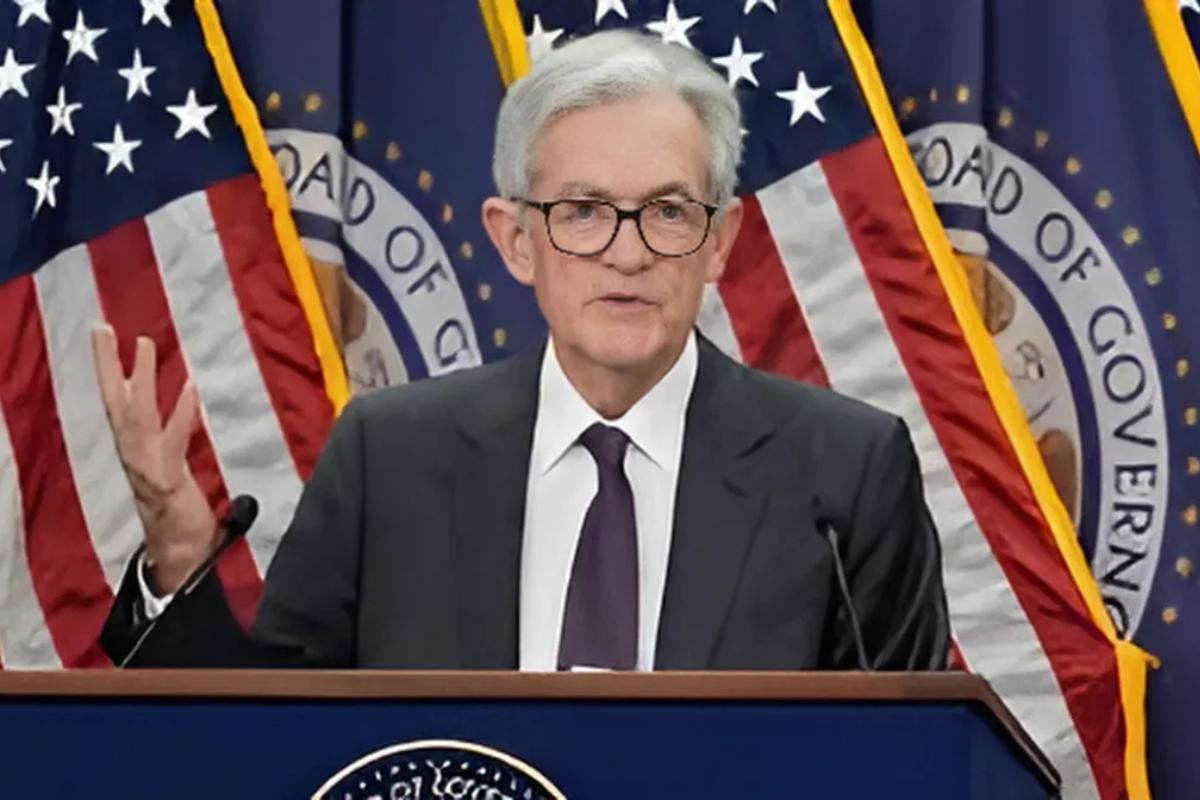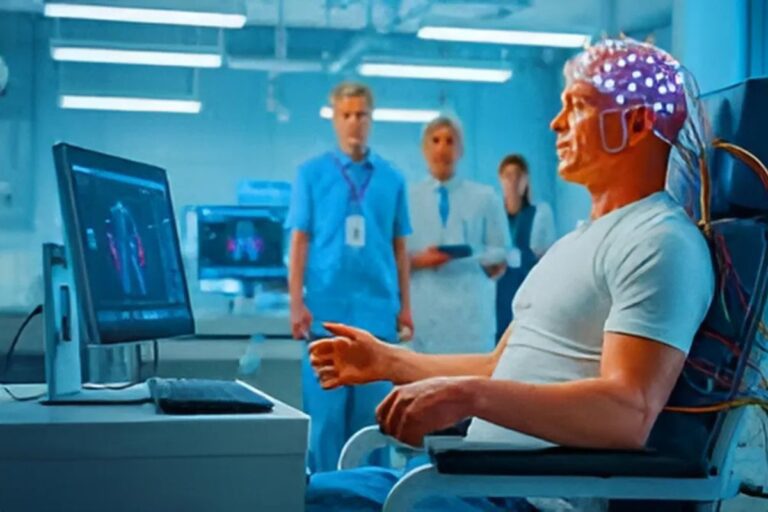JACKSON HOLE, WYOMING – In a highly anticipated and career-defining speech, Federal Reserve Chair Jerome Powell signaled a pivotal shift in the central bank’s stance, suggesting that interest rate cuts could be on the horizon as concerns about a weakening labor market begin to overshadow the fight against inflation.
Speaking at the annual Jackson Hole Economic Policy Symposium, Powell, in his final address at the prestigious event, pointed to a “shifting balance of risks” that may soon require the Fed to adjust its policy. The remarks, delivered amidst a backdrop of intense political pressure and economic uncertainty, sent a clear message to Wall Street and Main Street alike: the era of holding rates steady may be coming to an end.
For months, the Federal Reserve has been in a holding pattern, keeping its benchmark interest rate stable to tame stubborn inflation. But Powell’s speech on Friday, August 22, 2025, marked a distinct change in tone. It was less about the inflation battle already fought and more about the potential economic skirmishes yet to come. The message was subtle, yet unmistakable. The Fed is now looking at a two-front war: not just prices, but jobs, too.
A “Curious” Labor Market and Rising Employment Fears
The core of Powell’s pivot lies in his assessment of the U.S. labor market. He described the current situation as a “curious kind of balance,” a delicate state resulting from a slowdown in both the demand for workers and the supply of them. Funny thing is, this isn’t the kind of balance that lets you sleep at night.
“Downside risks to employment are rising,” Powell stated directly, a phrase that echoed through financial markets. He highlighted the recent slowdown in monthly job growth, questioning whether it stemmed from cooling business demand or a shrinking labor pool, potentially influenced by the Trump administration’s immigration policies.
This isn’t just academic chatter. Powell warned that if these employment risks materialize, they could hit the economy “swiftly through significant layoffs and a rise in unemployment”. It was a sobering acknowledgment of the fragility underlying an otherwise resilient economy. After a year where the unemployment rate ticked up nearly a full percentage point development that, historically, often precedes a recession Fed’s caution seems more than justified.
Here’s the kicker: for the first time in a while, the Fed chair seemed to be saying that the risk of doing nothing and letting the job market falter might be greater than the risk of cutting rates and potentially nudging inflation. It’s a profound recalibration.
The Inflation Question: Taming the Beast Amid Tariff Turmoil
While the focus shifted to jobs, Powell didn’t give the all-clear on inflation. He acknowledged that it remains “somewhat elevated,” even as it has cooled considerably from its post-pandemic peaks. The Fed remains committed to its 2% target, a cornerstone of its policy framework.
However, Powell introduced a new, more confident nuance regarding one of the biggest inflation wildcards: tariffs. He noted that the price pressures from President Trump’s tariffs were increasingly looking “transient”. This is significant. It suggests the Fed may be more willing to “look through” these specific price hikes, believing they won’t lead to the kind of broad, sustained inflation that would demand higher interest rates.
He framed the current predicament as a “challenging situation” where risks to inflation are tilted up, while employment risks are tilted down. Navigating this narrow path, he implied, would require careful and possibly preemptive action.
Wall Street Roars its Approval
Investors, who had been anxiously awaiting clarity, got the signal they were hoping for. The reaction in the markets was immediate and explosive.
- Stocks Soared: U.S. stock indices surged, with the Dow Jones Industrial Average jumping over 1.5% and positioning itself for a potential record close. The S&P 500 and Nasdaq followed suit, snapping a five-day losing streak. The cheer on Wall Street was palpable.
- Bonds Rallied: In the bond market, Treasury yields fell as traders ramped up their bets on a forthcoming rate cut.
- The Dollar Dipped: The U.S. dollar weakened against other major currencies, a classic sign that investors expect lower interest rates, which make a currency less attractive to hold.
- Rate Cut Bets Surge: The probability of a quarter-point rate cut at the Fed’s September meeting shot up. Before the speech, traders saw about a 75% chance; afterward, those odds jumped to nearly 90%.
Stephen Brown, an economist at Capital Economics, called the speech “more dovish than markets were braced for,” capturing the general sentiment that Powell had leaned more towards supporting growth than previously expected.
The Elephant in the Room: Navigating a Political Storm
It’s impossible to analyze Powell’s speech without considering the immense political pressure he faces. President Trump has been openly critical of the Fed chair, a man he first appointed but later soured on for not keeping monetary policy sufficiently loose.
The pressure campaign has been relentless and, you know, kind of unprecedented in modern history. In the week leading up to the Jackson Hole symposium, the Trump administration intensified its offensive. The Justice Department signaled an investigation into Fed Governor Lisa Cook over alleged mortgage fraud, and the President continued to call for Powell’s resignation and substantial, immediate rate cuts.
Against this backdrop, Powell’s speech was a masterclass in central bank diplomacy. He didn’t mention the President or the White House directly. Instead, he grounded his entire argument in the Fed’s dual mandate of maximum employment and price stability and, most importantly, in the data. By focusing on rising employment risks, he laid out a data-driven justification for a potential policy shiftone that happens to align with the White House’s demands but isn’t explicitly because of them.
This was Powell threading a very fine needle: maintaining the Fed’s institutional independence while responding to evolving economic data that points toward the very action his biggest critic has been demanding.
A New Framework for a New Economy
Adding another layer of substance to the day, the Federal Open Market Committee (FOMC) also announced the unanimous approval of its updated “Statement on Longer-Run Goals and Monetary Policy Strategy”. This might sound like bureaucratic housekeeping, but it’s the philosophical bedrock of the Fed’s actions.
The review, which began in November 2024 and included public listening events, was designed to incorporate the lessons learned over the last five turbulent years. The goal, the Fed said, is to enhance the transparency and effectiveness of monetary policy for the benefit of all Americans. While the Fed’s 2% inflation goal was not up for debate, the updated framework reflects a central bank adapting to a post-pandemic economy that has repeatedly defied old models.
What This Means for You
So, what does all this Fed-speak mean for the average person? Believe it or not, it could have a real impact on your wallet.
If the Fed does cut interest rates in September, as is now widely expected, it will become cheaper to borrow money. This could translate to:
- Lower interest rates on mortgages are making it easier to buy a home.
- More affordable car loans.
- Reduced interest charges on credit card balances.
The ultimate goal of such a move is to give the economy a bit of a boost to encourage businesses to invest and hire, and to prevent the “significant layoffs” that Powell warned about. It’s a proactive measure designed to sustain the economic expansion and support the job market before it takes a serious turn for the worse.
A Legacy-Defining Moment
As Jerome Powell stepped away from the podium in Jackson Hole for the last time as Fed Chair, he received a standing ovation. His term, which expires in May 2026, has been one of the most tumultuous in the central bank’s history, marked by a global pandemic, historic inflation, and now, a period of intense political scrutiny.
His final Jackson Hole speech will likely be remembered as the moment the Fed officially pivoted from inflation hawk to a more balanced guardian of the economy. He left the door wide open for a September rate cut, but, true to form, made no explicit promises. The final decision will depend on the crucial jobs and inflation reports due out in the coming weeks.
The path ahead remains uncertain. But one thing is clear: the Federal Reserve has signaled it is ready to act to protect the American job market. And for an economy standing at a crossroads, that signal is everything.






















